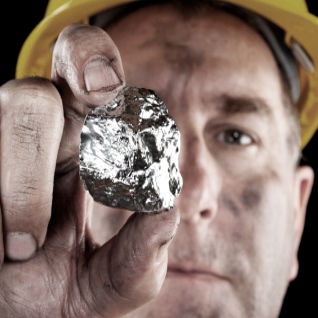If Gold and Silver Prices Increase, How will this Impact Industrial Applications?

One of the largest and rapidly-growing categories of precious metals demand is industrial uses. Gold and silver have long been used in cameras, medical supplies, silverware, communications switches, etc.; but did you know that gold—and especially silver—are used in almost all newer digital technologies? This includes cellphones, TVs, and all kinds of computers—ranging from desktops to iWatches. Will the future growth in these industrial uses be limited by surging gold and silver prices? Or will the rapidly-increasing use of gold and silver continue to fuel technological innovations at a greater pace, regardless of an increase in metals costs?
When gasoline prices skyrocketed in the 2000s, there was a big shift in demand away from gas-guzzlers toward more fuel-efficient vehicles. This, in turn, reduced long-term demand for gasoline since consumers had switched to alternative vehicles. Could we see a similar shift in demand if soaring precious metals costs compel manufacturers to seek alternatives?
Industrial Applications for Silver
Silver is the most conductive of all elements. This means that switching to an alternative material or diluting the metal would also mean a significant cut into product quality.
In that regard, the next-in-line element is copper. Copper is actually a viable (yet less-desirable) alternative when used in high-voltage electronics like motors or microwaves. However, copper is not an efficient-enough conductor to serve in most modern electronics. Computers, TVs, cell phones etc. would need to be re-designed from the ground up to allow for a larger power source and energy transmission system to compensate for the new copper components…which just isn’t feasible.
Silver is a key ingredient in the solar industry, since it has the highest thermal conductivity of any known substance. Switching the silver out for copper or other substances would pose a huge setback to the efficiency of solar cells. With the solar industry approaching economic viability in the coming years, it likely won’t see large-scale growth if it switches to a less-efficient material.
All metals have antibiotic properties, to some degree. While being one of the most effective microbe-killers, silver is also the least toxic metal to humans. There is no other element or substance currently known that can serve the same role. For this reason, there would be no fallback option if silver prices were to soar—pharmaceutical companies would need to raise their prices in tandem with the rising cost of silver.
Industrial Applications for Gold
Gold is the most malleable and ductile of metals. While it is coveted for its other natural properties (like electric conductivity and high density), gold is able to easily be formed into the smallest, thinnest shapes for electronic contact points. The average cell phone includes about 0.001 troy ounces of gold (worth about $1.30). While this is a miniscule amount in itself, it adds up when 4.5 billion of the world’s people have a cell phone. Almost 1 billion cell phones are made each year. In addition to cell phones, gold is also a necessary component in modern TVs, computers, and other devices that have solid-state data storage.
For both gold and silver, any potential price surge would likely not have the effect of forcing an alternative metal/substance into use. It is much more likely to result in increased prices of the products mentioned above. How much their costs are affected will depend on the quantity of precious metals used in production. Even in the scenario that individual manufacturers are able to reduce their metals consumption, our endless pursuit to have the best, most compact, reliable, and efficient products will continue to fuel demand for gold and silver in the decades to come.

